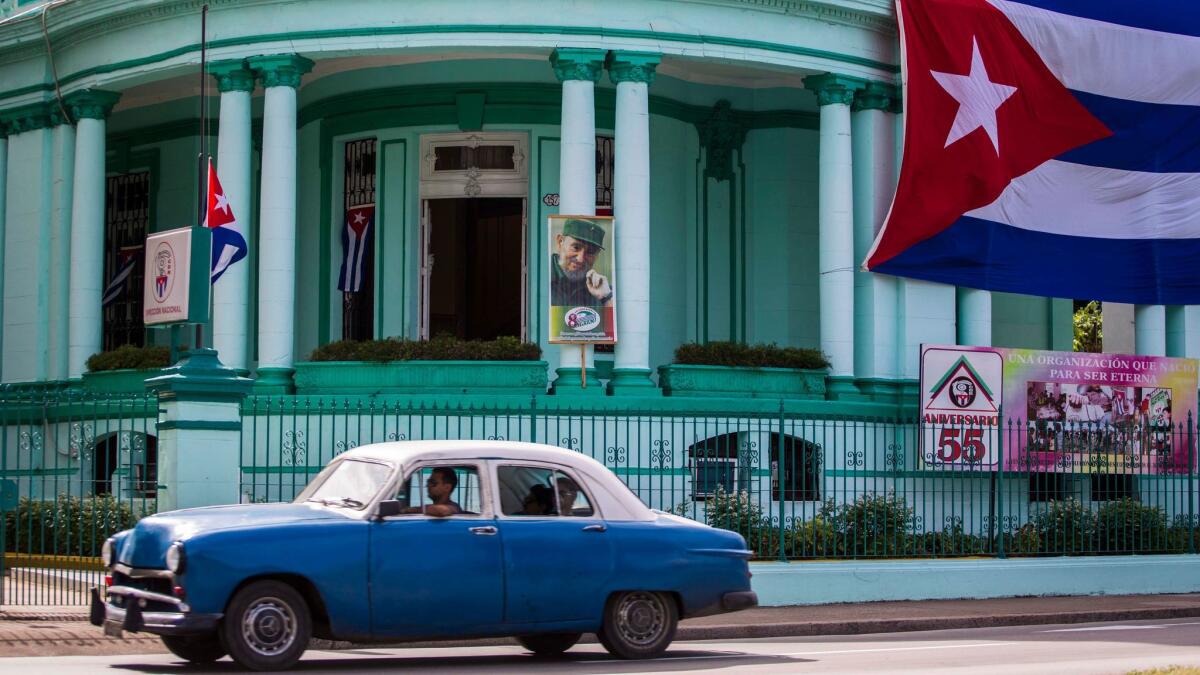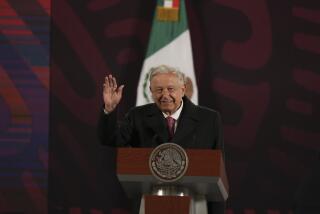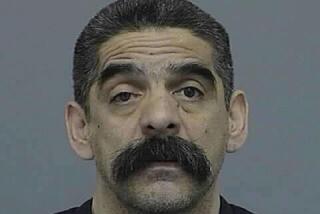Back Story: The Cuba where Fidel Castro died is a very different place from the one he ruled for decades

- Share via
Reporting from Washington — Few Cubans alive today can remember a time without Fidel Castro.
In his day, he was one of the most influential, most provocative figures in the Western Hemisphere.
Yet the Cuba in which Castro died Friday night at age 90 is a very different Cuba from the one he ruled for nearly half a century, and the impact of his death will also be very different.
New diplomatic and commercial relations with the United States, unimaginable during much of Castro’s reign, are now in place, thanks to the pragmatism of his successor, brother Raul, and of President Obama.
Castro, who stepped down as head of the government in 2008, had largely faded from the spotlight in recent years, making occasional appearances at a university, on the dais of a Communist Party meeting or in photographs showing him greeting a visiting dignitary. He looked frail and gaunt, almost always in an exercise suit.
It was probably by government design, easing Castro from view as a way to ease the transition and solidify his brother’s grip on power.
Castro today represents a bygone era. Cuba’s “new chapter” opened before Castro’s death.
In terms of governance, little is likely to change. The uncertainty that would have accompanied a handover of power is greatly lessened. Raul Castro is in charge.
Yoani Sanchez, a world-known Cuban blogger, was touring Havana’s picturesque Malecon, or seafront boulevard, in the early morning Saturday to gauge the reaction of the mostly young people gathered there.
“Some are saying goodbye with pain, others with relief,” Sanchez said via Twitter. “The great majority with a certain touch of indifference.”
As Fidel Castro faded, Raul consolidated and shifted. He slightly loosened socialist restrictions on the economy while budging hardly at all on political freedoms.
He allowed, for the first time, a measure of private enterprise, where ordinary Cubans could run small businesses, from restaurants to beauty salons to mechanics’ shops.
It made a big difference for many Cubans.
Even more significant, Raul Castro lifted a requirement that Cubans obtain a special permit to travel off the island. Suddenly even dissidents, like Sanchez, could get passports, travel abroad and return home.
I noticed remarkable change between my first and second visits to Cuba.
On my first trip to Havana in 2009, I was pursued by Cubans begging me to buy them food or diapers. Not two years later, they were selling food and diapers, handcrafted knickknacks and just about anything else an imagination could scrape together.
At the same time, other forces were at work. A young Cuban generation was growing increasingly savvy about voicing dissent, even though generally denied access to the Internet. They could complain, grouse and disagree with the government, but cloak it in music, painting, dance and other artistic expression.
As Cuba’s famous novelist Leonardo Padura put it: “Risks and censorship can also be a challenge to the imagination.”
Somehow, the dissent of artists and youth was less of a threat to the government. Overt dissent -- such as the Ladies in White, the wives and mothers of imprisoned political activists -- continued to be dealt with harshly, with pro-government demonstrators harassing their weekly marches, and state security agents routinely beating or arresting them, however briefly.
Omar Sayut is one of the artists, both proud and open in his criticism of the government, effusive in his posting of hip-hop videos on YouTube. And willing to do the occasional quick stint in jail.
“This is how I speak out,” Sayut, in his early 30s, told me last year on my most recent trip to Cuba.
Separately, and secretly, another force was at work. Judging that 50 years of embargo and isolation had failed to substantially weaken Castro’s rule, the Obama administration embarked on behind-the-scene talks, with the help of, among others, Pope Francis.
It took about two years, but in December 2014, Obama and Raul Castro made dramatic, simultaneous televised announcements to their respective nations. Diplomatic ties were being renewed after half a century.
Over the year that followed, embassies were reopened, airlines were flying, and, slowly, trade deals were being made.
It culminated with the remarkable trip by Obama to Havana in March, the first sitting U.S. president to visit in about 90 years.
Other changes are slowly transforming the island. Dollar-spending tourists are flooding Cuba, with the pros and cons that influx suggests. Many, though not all of the dilapidated homes and buildings that populated most Havana neighborhoods have gotten a coat of paint. On occasion, more food is available at markets.
Would this progress, however tempered and limited it might be, have taken place if it were still Fidel, not Raul Castro, running things the last few years?
It’s hard to say but not likely.
Raul certainly was more realistic and willing to acknowledge failings than Fidel, the ideologue, ever was. By acknowledging something was not working, Raul could allow at least a few tweaks, though he insists that socialism remains Cuba’s system.
Ultimately, more than a single policy or politician’s good will, it was the weight of time that brought change to the island. It changed Cuba’s system. It took Fidel Castro’s body.
And now the new chapter continues.
For more on international affairs, follow @TracyKWilkinson on Twitter
ALSO
Timeline: The life of Fidel Castro
History will judge Castro’s era, Obama says, as world leaders react to former Cuban leader’s death
Fidel Castro marks his 90th birthday with a letter, thanking Cuba and criticizing Obama
More to Read
Sign up for Essential California
The most important California stories and recommendations in your inbox every morning.
You may occasionally receive promotional content from the Los Angeles Times.











